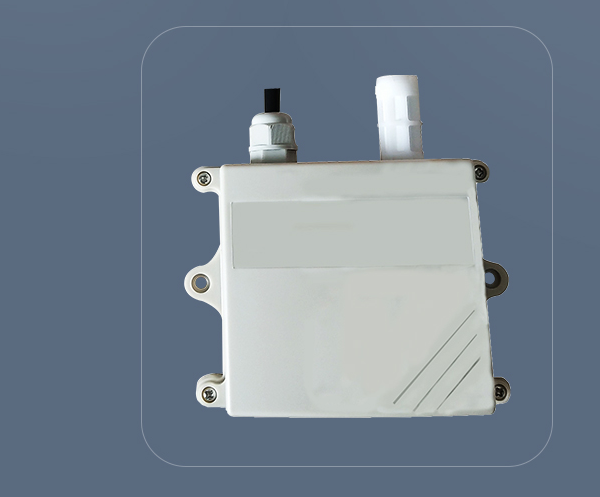

— Blogs —
—Products—
 Consumer hotline +8618073152920
Consumer hotline +8618073152920 WhatsApp:+8615367865107
Address:Room 102, District D, Houhu Industrial Park, Yuelu District, Changsha City, Hunan Province, China
Product knowledge
Time:2022-09-13 21:56:07 Popularity:1103
Atmospheric temperature, humidity and pressure integrated sensor (suspended)
Since temperature and humidity are closely related both in terms of physical quantities and in actual people's lives, a sensor that integrates temperature and humidity is produced.
A temperature and humidity sensor refers to a device or device that can convert temperature and humidity into electrical signals that can be easily measured and processed. The temperature and humidity sensors on the market generally measure temperature and relative humidity.

Let's first understand several physical quantities of temperature and humidity:
temperature:
A physical quantity that measures the heat and coldness of an object and is one of the seven basic physical quantities in the International System of Units. In production and scientific research, many physical phenomena and chemical processes are carried out at a certain temperature, and people's lives are closely related to it.
humidity:
Humidity has been closely related to life for a long time, but it is difficult to express in quantity.
The most commonly used physical quantity to express humidity in daily life is the relative humidity of the air. Expressed in %RH. There is a close relationship between relative humidity and temperature in the derivation of physical quantities. For a certain volume of airtight gas, the higher the temperature, the lower the relative humidity, and the lower the temperature, the higher the relative humidity. This involves complex thermal engineering knowledge.
Some definitions of humidity:
Relative humidity:
In the measurement method, humidity is defined as the "quantity of the state of the object". The humidity referred to in daily life is relative humidity, expressed in RH%. In short, it is the percentage of saturated water vapor (saturated water vapor pressure) in a gas (usually air) that contains the same amount of water vapor (water vapor pressure) as its air.
Absolute humidity:
Refers to the actual amount of water vapor contained in a unit volume of air, generally in grams. Temperature has a direct impact on absolute humidity. In general, the higher the temperature, the more water vapor is emitted, and the greater the absolute humidity; on the contrary, the lower the absolute humidity.
Saturated humidity:
At a certain temperature, unit volume, the maximum amount of water vapor that can be contained in the air. If this limit is exceeded, the excess water vapor will condense and become water droplets, and the air humidity at this time becomes saturated humidity. The saturated humidity of the air is not fixed, it varies with the temperature. The higher the temperature, the more water vapor can be contained in a unit volume of air, and the greater the saturated humidity.
Dew point:
Refers to the air containing a certain amount of water vapor (absolute humidity). When the temperature drops to a certain level, the water vapor contained will reach a saturated state (saturated humidity) and begin to liquefy into water. This phenomenon is called condensation. The temperature at which water vapor begins to liquefy into water is called the "dew point temperature" or "dew point" for short. If the temperature continues to drop below the dew point, the supersaturated water vapor in the air will condense into water droplets on surfaces. In addition, the wind is closely related to the temperature and humidity in the air, and it is also one of the important factors affecting the change of air temperature and humidity.

Product introduction of atmospheric temperature, humidity and pressure sensor:
The wall-mounted humidity sensor is a fully digital detection, high-precision sensor, which is integrated by high-precision digital temperature and humidity. The built-in signal processing unit can output corresponding signals according to user needs. It is mainly used to measure indoor temperature and humidity, and can sensitively detect environmental conditions. Atmospheric temperature, atmospheric humidity; can be widely used in meteorology, environment, laboratory, warehouse storage and other environments.
Prev:Ultrasonic wind speed and direction sensor
Next:The Future of Agriculture:Agricultural Internet of Things
Related recommendations
Sensors & Weather Stations Catalog
Agriculture Sensors and Weather Stations Catalog-NiuBoL.pdf
Weather Stations Catalog-NiuBoL.pdf
Related products
 Combined air temperature and relative humidity sensor
Combined air temperature and relative humidity sensor Soil Moisture Temperature sensor for irrigation
Soil Moisture Temperature sensor for irrigation Soil pH sensor RS485 soil Testing instrument soil ph meter for agriculture
Soil pH sensor RS485 soil Testing instrument soil ph meter for agriculture Wind Speed sensor Output Modbus/RS485/Analog/0-5V/4-20mA
Wind Speed sensor Output Modbus/RS485/Analog/0-5V/4-20mA Tipping bucket rain gauge for weather monitoring auto rainfall sensor RS485/Outdoor/stainless steel
Tipping bucket rain gauge for weather monitoring auto rainfall sensor RS485/Outdoor/stainless steel Pyranometer Solar Radiation Sensor 4-20mA/RS485
Pyranometer Solar Radiation Sensor 4-20mA/RS485
Screenshot, WhatsApp to identify the QR code
WhatsApp number:+8615367865107
(Click on WhatsApp to copy and add friends)